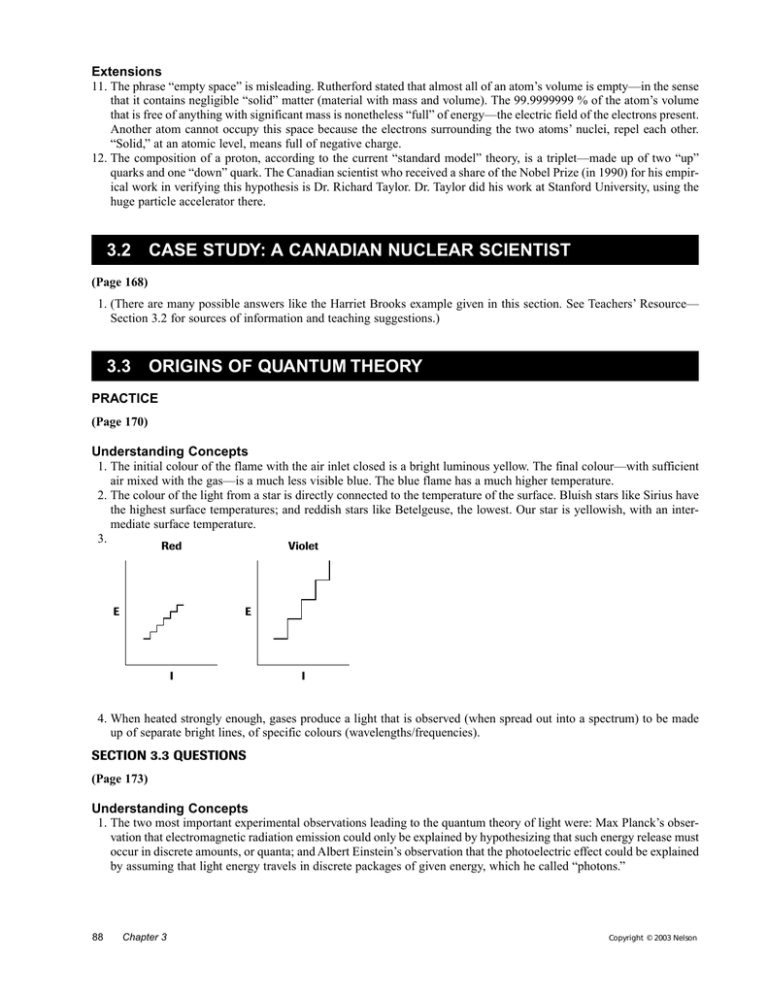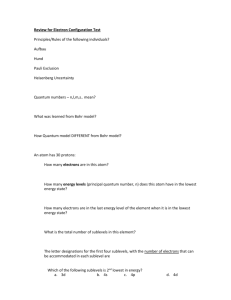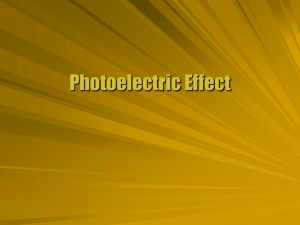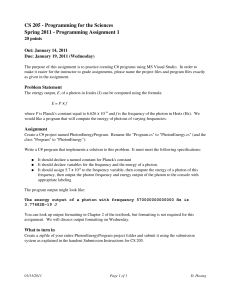Extensions
advertisement

Extensions 11. The phrase “empty space” is misleading. Rutherford stated that almost all of an atom’s volume is empty—in the sense that it contains negligible “solid” matter (material with mass and volume). The 99.9999999 % of the atom’s volume that is free of anything with significant mass is nonetheless “full” of energy—the electric field of the electrons present. Another atom cannot occupy this space because the electrons surrounding the two atoms’ nuclei, repel each other. “Solid,” at an atomic level, means full of negative charge. 12. The composition of a proton, according to the current “standard model” theory, is a triplet—made up of two “up” quarks and one “down” quark. The Canadian scientist who received a share of the Nobel Prize (in 1990) for his empirical work in verifying this hypothesis is Dr. Richard Taylor. Dr. Taylor did his work at Stanford University, using the huge particle accelerator there. 3.2 CASE STUDY: A CANADIAN NUCLEAR SCIENTIST (Page 168) 1. (There are many possible answers like the Harriet Brooks example given in this section. See Teachers’ Resource— Section 3.2 for sources of information and teaching suggestions.) 3.3 ORIGINS OF QUANTUM THEORY PRACTICE (Page 170) Understanding Concepts 1. The initial colour of the flame with the air inlet closed is a bright luminous yellow. The final colour—with sufficient air mixed with the gas—is a much less visible blue. The blue flame has a much higher temperature. 2. The colour of the light from a star is directly connected to the temperature of the surface. Bluish stars like Sirius have the highest surface temperatures; and reddish stars like Betelgeuse, the lowest. Our star is yellowish, with an intermediate surface temperature. 3. Red E Violet E I I 4. When heated strongly enough, gases produce a light that is observed (when spread out into a spectrum) to be made up of separate bright lines, of specific colours (wavelengths/frequencies). SECTION 3.3 QUESTIONS (Page 173) Understanding Concepts 1. The two most important experimental observations leading to the quantum theory of light were: Max Planck’s observation that electromagnetic radiation emission could only be explained by hypothesizing that such energy release must occur in discrete amounts, or quanta; and Albert Einstein’s observation that the photoelectric effect could be explained by assuming that light energy travels in discrete packages of given energy, which he called “photons.” 88 Chapter 3 Copyright © 2003 Nelson 2. Max Planck may be considered the father of quantum theory because he was the first to advance the concept that energy like matter, is quantized, and not continuous. 3. The photoelectric effect is the emission of electrons from the surface of a substance when electromagnetic (light) energy strikes the surface. The experiment requires a light source that can be varied in intensity (brightness) and also in frequency (wavelength/colour); and equipment to measure the (photo)electron flow rate (current) and relative electron energy (voltage). 4. Quantum is Planck’s term for a small, discrete, indivisible quantity. Photon is Einstein’s term for a discrete quantity, or quantum, of light. Applying Inquiry Skills 5. Experimental Design (a) Using a photoelectric effect apparatus, light of a constant intensity is varied in colour (frequency/wavelength) and electric current is measured. The light colour is the independent variable; the current is the dependent variable; and the light intensity and type of metal surface are the controlled variables. Prediction/Hypothesis (b) According to Einstein’s photon theory, a photon has an energy determined by its colour or frequency, and a certain minimum quantity of energy is required to release an electron from a specific type of atom. If the photon energy is steadily decreased, at some point it will be too low to release electrons from a sodium metal surface. Therefore, at some colour or frequency of light, no photoelectric effect will occur. Extensions 6. (a) h 6.6 10–34 J/Hz f 5.5 1014 Hz E hf J E 6.6 10–34 5.5 1014 Hz Hz E 3.6 10–19 J The minimum photon energy required is 3.6 10–19 J. (b) The energy absorbed (gained) by a photoelectron is the same as the energy supplied (lost) by the photon that “hits” it, so the minimum photoelectron energy increase is also 3.6 10–19 J. 7. (a) h 6.6 10–34 J/Hz fUV 1.5 1015 Hz fIR 3.3 1014 Hz E hf J E 6.6 10–34 1.5 1015 Hz Hz –19 E 9.9 10 J The ultraviolet photon energy is 9.9 10–19 J. J E 6.6 10–34 3.3 1014 Hz Hz E 2.2 10–19 J The infrared photon energy is 2.2 10–19 J. 9.9 10–19 J 4.5 (b) 2.2 10–19 J 1 The UV photon is about 4.5 times as energetic as the IR photon. (c) In order of increasing energy of photons, the sequence is infrared, visible, ultraviolet, and X-ray. Copyright © 2003 Nelson Atomic Theories 89





